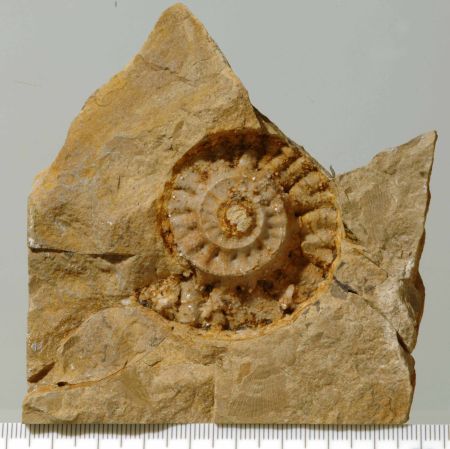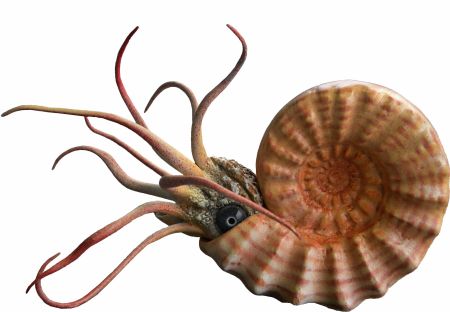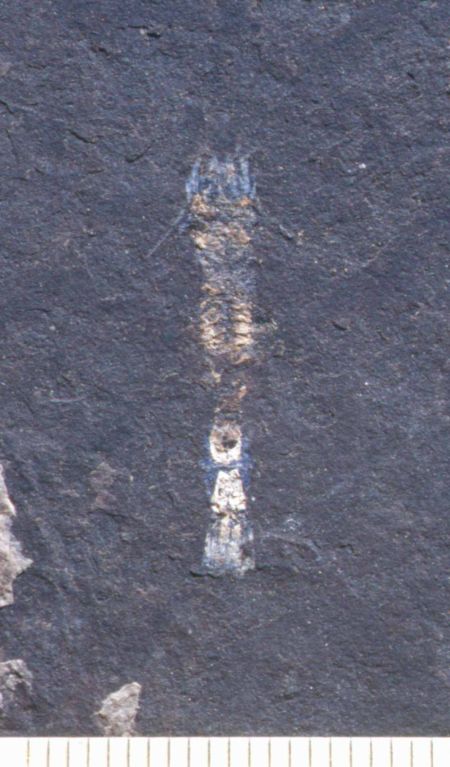Molluscs and other marine invertebrates
In addition to the well-known reptiles and fishes, the fossiliferous deposits of Monte San Giorgio have also provided many species of marine invertebrates. These have been used to better understand the environmental conditions through this time interval and to more precisely date the vertebrate levels. Molluscs are more common than vertebrates, especially in the Besano Formation. Detailed bed-by-bed studies of the ammonoids and bivalves in the Zurich excavations between 1950 and 1983 enabled a subdivision of the so-called “Grenzbitumenzone” (“bituminous boundary zone”, now Besano Formation) into biochronologic zones and to place the Anisian/Ladinian boundary in its upper third part.
Many of the molluscs (bivalves, gastropods and cephalopods) are preserved as imprints, as their calcareous shells were dissolved during the fossilization process. To reconstruct their shape and enable study, scientists have to fill the cavities left behind in the rock after dissolution of the shell with silicone.
Bivalves include, for example, the small round-shelled Peribositra and many different species of Daonella, a relatively larger genus that was very widespread in the seas of the Middle Triassic. The cephalopods include different genera and species of ammonoids, a group of extinct organisms related to the modern Nautilus. Ammonoids are excellent index fossils, allowing a relative dating of the rocks in which they are contained. The most important genera at Monte San Giorgio are Parakellnerites, Stoppaniceras, Ticinites, Serpianites, Repossia, Nevadites, Chieseiceras and Eoprotrachyceras. The gastropods found on Monte San Giorgio have not yet been precisely identified.
Mould of the ammonoid Ticinites in a dolomite bed of the Besano Formation, © PIMUZ

Life reconstruction of the ammonoid Ticinites, model B. Scheffold, © PIMUZ

Crustaceans are rare in the Besano Formation (Antrimpos, Atropicaris) and in the Meride Limestone. Exceptions to this are the Sceltrich beds, in which Meridecaris has been found, and the Kalkschieferzone, where crustaceans are relatively more abundant and may even appear in masses, as in the case of the small shrimp Schimperella. Among the other species to note are the clam shrimps or branchiopods (such as Laxitextella), microscopic crustaceans of approximately 0.5 cm in length.
Schimperella, a 2 cm long mysid shrimp from the Kalkschieferzone, © PIMUZ





